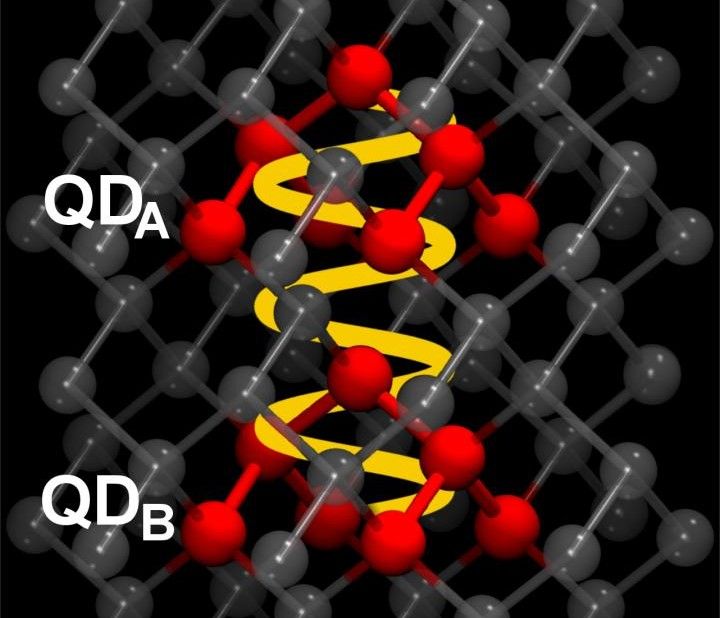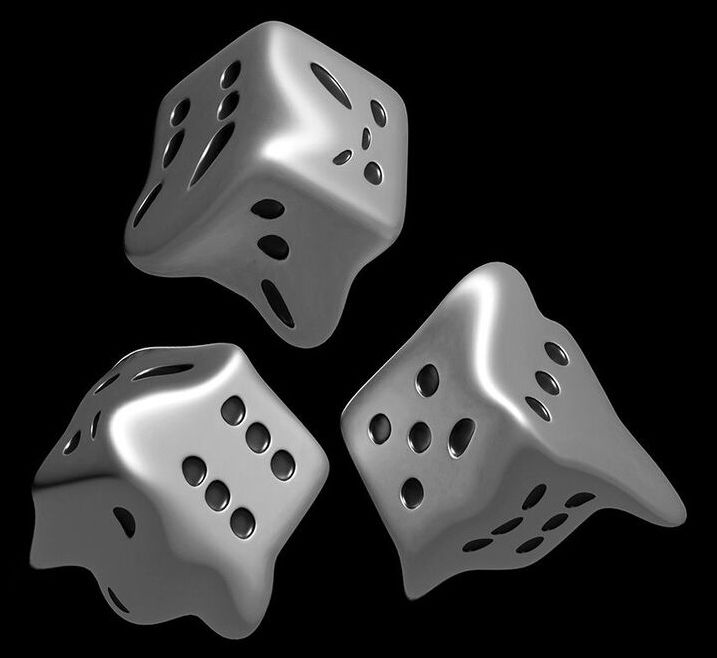Computer model simulates how interactions extend exciton lifetimes.



Given the importance of the Kirkwood–Dirac quasiprobability’s nonclassical values, two natural questions arise: Under what conditions does this quasiprobability behave anomalously? And how anomalous can its behaviour get? That’s what we wanted to explore.
What did you do in the paper?
We pinned down conditions under which the Kirkwood–Dirac quasiprobability assumes nonclassical values. Using these conditions, one can calculate which experiments can exhibit certain types of quantum advantages. We also put a “ceiling” on how much nonclassicality one Kirkwood–Dirac quasiprobability distribution can contain.

It was the third round of announcements Scott has made regarding her philanthropy, which rivals the largest of foundations. In 2020, she made two similar surprise announcements and donated about $6bn to causes including Covid relief, gender equity, historically Black colleges and universities and other schools.
Ex-wife of Jeff Bezos gives to 286 groups and says she wants to donate ‘fortune that was enabled by systems in need of change’

Nanoengineers at the University of California San Diego have developed immune cell-mimicking nanoparticles that target inflammation in the lungs and deliver drugs directly where they’re needed. As a proof of concept, the researchers filled the nanoparticles with the drug dexamethasone and administered them to mice with inflamed lung tissue. Inflammation was completely treated in mice given the nanoparticles, at a drug concentration where standard delivery methods did not have any efficacy.
The researchers reported their findings in Science Advances on June 16.
What’s special about these nanoparticles is that they are coated in a cell membrane that’s been genetically engineered to look for and bind to inflamed lung cells. They are the latest in the line of so-called cell membrane-coated nanoparticles that have been developed by the lab of UC San Diego nanoengineering professor Liangfang Zhang. His lab has previously used cell membrane-coated nanoparticles to absorb toxins produced by MRSA; treat sepsis; and train the immune system to fight cancer. But while these previous cell membranes were naturally derived from the body’s cells, the cell membranes used to coat this dexamethasone-filled nanoparticle were not.
Check out my short video in which I explain some super exciting research in the area of nanotechnology: de novo protein lattices! I specifically discuss a journal article by Ben-Sasson et al. titled “Design of biologically active binary protein 2D materials”.
Here, I explain an exciting nanotechnology paper “Design of biologically active binary protein 2D materials” (https://doi.org/10.1038/s41586-020-03120-8).
Though I am not involved in this particular research myself, I have worked in adjacent areas such as de novo engineering of aggregating antimicrobial peptides, synthetic biology, nanotechnology-based tools for neuroscience, and gene therapy. I am endlessly fascinated by this kind of computationally driven de novo protein design and would love to incorporate it in my own research at some point in the future.
I am a PhD candidate at Washington University in St. Louis and the CTO of the startup company Conduit Computing. I am also a published science fiction writer and a futurist. To learn more about me, check out my website: https://logancollinsblog.com/.

Circa 2015
Coatings that attract water (hydrophilic) are useful for anti-fogging applications6; any liquid water spreads out into a thin film thereby maintaining transparency. This is more favorable than using hydrophobic surfaces for anti-fogging as this requires a surface to be tilted for the droplets to roll off and transparency be maintained. Hydrophilic surfaces can also be used for self-cleaning7. Previous examples of superhydrophilic surfaces include the use of polymer–nanoparticle coatings8,9,10,11 however mechanical durability was not investigated.
Coatings with surface tensions lower than that of water (72 mN m–1) but higher than that of oils12 (20–30 mN m–1) will attract oils (oleophilic) but repel water and can be used to create oil–water separators13,14,15. When applied to a porous substrate, the coating will allow the passage of oil but block the passage of water, resulting in their separation. In addition, their water repellency also makes them ideal for self-cleaning4,16 and anti-icing17,18,19 applications. Anti-icing surfaces are typically superhydrophobic as supercooled droplets of water are able to roll off the cold surface before freezing and any ice formed is weakly adhered compared to hydrophilic surfaces due to an air cushion18,20.
Coatings with lower surface tensions (∼ 20 mN m–1 or less) will repel both oil (oleophobic) and water and are useful for anti-fouling such as in medical and transport applications, where both the oil-repellency and nanostructuring are of importance21,22,23,24,25,26,27. Previous work was not suitable for such applications as either the durability28 or oil-repellency29 was not optimal. The oil repellency also makes these surfaces ideal for anti-smudge applications30,31 where the oils from fingers are not deposited onto the surface and the surface remains clear. The water repellency means these coatings can also be used in self-cleaning and anti-icing applications.

Thu, jun 17 at 3 PM PDT.
Join us early at 6:00 PM for a Perpetual Life Virtual Party. Then 7 PM presentation with Brian Clement Ph.D., L.N. of The Hippocrates Health Institute.
Brian Clements’s experience with food and lifestyle was like that of most. At the early age of 20, he began his journey to embrace a healthier way of life. Shedding exceptional weight and leaving behind, cigarettes and grass, he finally felt himself for the first time ever. Mature colleagues placed him under their wing and slowly led him down the road via conferences, lectures, and seminars held by some of the historic figures in the modern health movement.
Stay after for the Q & A and discussions interactive Zoom.
By using a reusable booster, the newest branch of the military signals openness to this cornerstone of Elon Musk’s rocketry company.
In search for a unifying quantum gravity theory that would reconcile general relativity with quantum theory, it turns out quantum theory is more fundamental, after all. Quantum mechanical principles, some physicists argue, apply to all of reality (not only the realm of ultra-tiny), and numerous experiments confirm that assumption. After a century of Einsteinian relativistic physics gone unchallenged, a new kid of the block, Computational Physics, one of the frontrunners for quantum gravity, states that spacetime is a flat-out illusion and that what we call physical reality is actually a construct of information within [quantum neural] networks of conscious agents. In light of the physics of information, computational physicists eye a new theory as an “It from Qubit” offspring, necessarily incorporating consciousness in the new theoretic models and deeming spacetime, mass-energy as well as gravity emergent from information processing.
In fact, I expand on foundations of such new physics of information, also referred to as [Quantum] Computational Physics, Quantum Informatics, Digital Physics, and Pancomputationalism, in my recent book The Syntellect Hypothesis: Five Paradigms of the Mind’s Evolution. The Cybernetic Theory of Mind I’m currently developing is based on reversible quantum computing and projective geometry at large. This ontological model, a “theory of everything” of mine, agrees with certain quantum gravity contenders, such as M-Theory on fractal dimensionality and Emergence Theory on the code-theoretic ontology, but admittedly goes beyond all current models by treating space-time, mass-energy and gravity as emergent from information processing within a holographic, multidimensional matrix with the Omega Singularity as the source.
There’s plenty of cosmological anomalies of late that make us question the traditional interpretation of relativity. First off, what Albert Einstein (1879 — 1955) himself called “the biggest blunder” of his scientific career – t he rate of the expansion of our Universe, or the Hubble constant – is the subject of a very important discrepancy: Its value changes based how scientists try to measure it. New results from the Hubble Space Telescope have now “raised the discrepancy beyond a plausible level of chance,” according to one of the latest papers published in the Astrophysical Journal. We are stumbling more often on all kinds of discrepancies in relativistic physics and the standard cosmological model. Not only the Hubble constant is “constantly” called into question but even the speed of light, if measured by different methods, and on which Einsteinian theories are based upon, shows such discrepancies and turns out not really “constant.”
